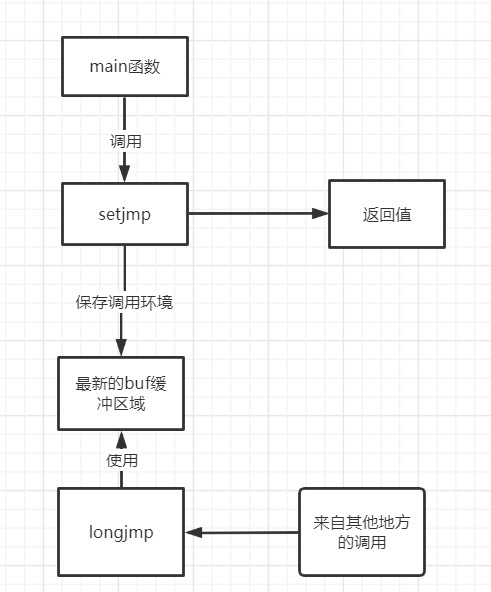c语言try catch c语言没有try catch的替代方案
AD_milk 人气:0setjmp与longjmp
后缀jmp指的就是jump,关看名字就能猜到这哥俩是干啥的了。使用他们俩就可以让程序控制流转移,进而实现对异常的处理。
异常处理的结构可以划分为以下三个阶段:
- 准备阶段:在内核栈保存通用寄存器内容
- 处理阶段:保存硬件出错码和异常类型号,然后向当前进程发送信号
- 恢复阶段:恢复保存在内核栈中的各个寄存器内容,返回当前进程的断电处继续执行
过程有点类似递归,只有文字你可能看的有点云里雾里,我们结合一个小例子来看看
#include <stdio.h>
#include <setjmp.h>
static jmp_buf buf;
void second(void) {
printf("second\n");
// 跳回setjmp的调用处 - 使得setjmp返回值为1
longjmp(buf, 1);
}
void first(void) {
second();
//这行到不了,因为second里面longjmp已经跳转回去了
printf("first\n");
}
int main() {
int rc;
rc = setjmp(buf);
if (rc==0) {
// 进入此行前,setjmp返回0
first();
}
// longjmp跳转回,setjmp返回1,因此进入此行
else if(rc==1){
printf("main\n");
}
return 0;
}
/*
the ressult as:
second
main
*/

现在我们再来看看两个函数的声明:
- setjmp(env) :将程序上下文存储在env中
- longjmp(env,status):env指代setjmp中所保存的函数执行状态变量,status则是作为setjmp的返回值
当然你也可以用switch代替上面的if else,其实try catch就相当于上面的那个函数你可以参考这个实现try catch。
signal信号处理
个人觉得这个在linux下更好用,并且也提供了更多的信号量宏。
下面给出的是signal头文件中的定义
#define SIGINT 2 // interrupt #define SIGILL 4 // illegal instruction - invalid function image #define SIGFPE 8 // floating point exception #define SIGSEGV 11 // segment violation #define SIGTERM 15 // Software termination signal from kill #define SIGBREAK 21 // Ctrl-Break sequence #define SIGABRT 22 // abnormal termination triggered by abort call
这里仅给出维基上的例子
#include <signal.h>
#include <stdio.h>
#include <stdlib.h>
static void catch_function(int signal) {
puts("Interactive attention signal caught.");
}
int main(void) {
if (signal(SIGINT, catch_function) == SIG_ERR) {
fputs("An error occurred while setting a signal handler.\n", stderr);
return EXIT_FAILURE;
}
puts("Raising the interactive attention signal.");
if (raise(SIGINT) != 0) {
fputs("Error raising the signal.\n", stderr);
return EXIT_FAILURE;
}
puts("Exiting.");
return 0;
}
总结
加载全部内容